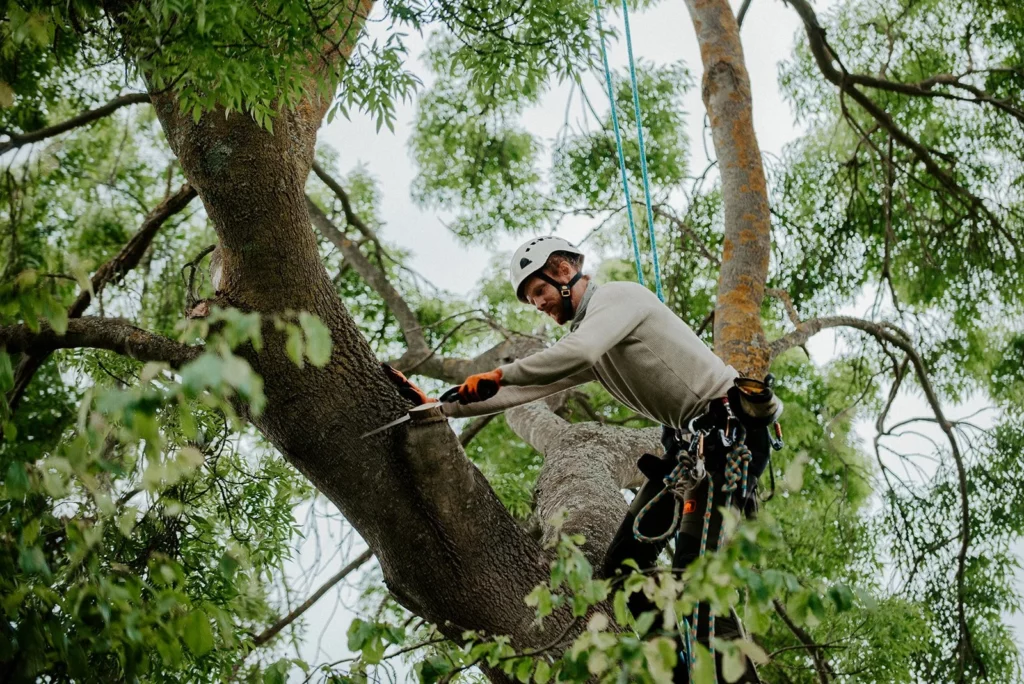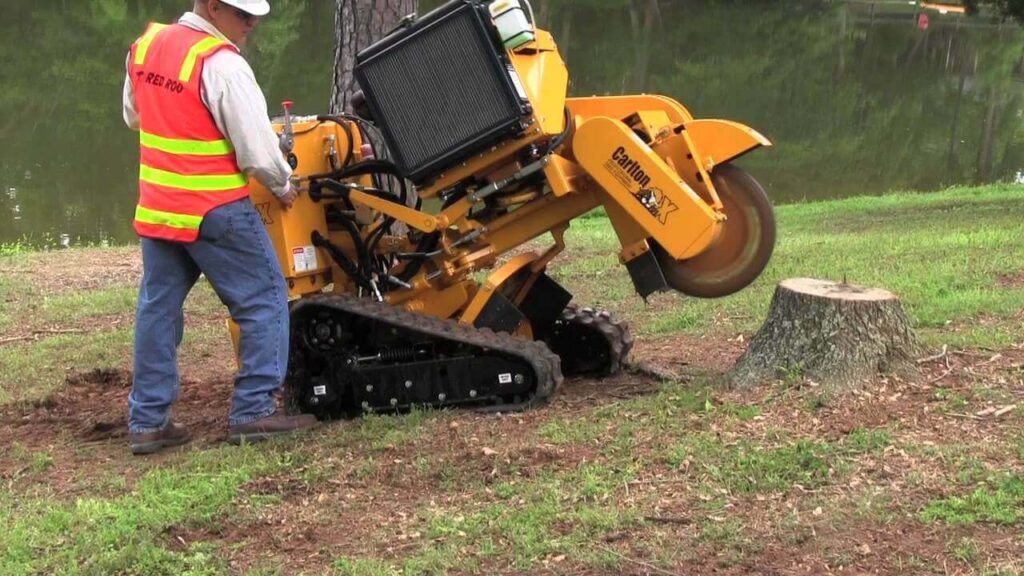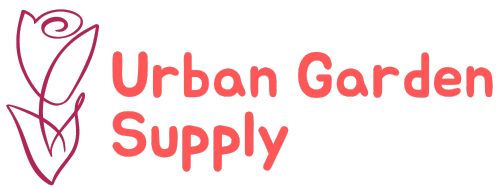What Is Urban Tree Management and Why Is It Important in Sydney?
Urban tree management in Sydney involves the careful planning, planting, upkeep, and removal of trees in urban areas. The goal is to strike a balance between maintaining ecological health and meeting the needs of the community. This practice plays a crucial role in shaping Sydney’s livability and ability to withstand environmental challenges.
The Importance of Sydney’s Urban Forest
Sydney’s urban forest provides essential benefits to its residents on a daily basis, and maintaining these green assets relies heavily on professional tree services Sydney offers.
Improved air quality: Trees absorb carbon dioxide and filter out pollutants, leading to cleaner air.
Temperature control: Urban trees offer natural cooling, which is especially important during hot summer months.
Flood prevention: Properly managed trees help manage stormwater runoff, reducing the risk of flooding and protecting nearby waterways.
Biodiversity support: Built-up areas can still be home to various species through the creation of wildlife habitats.
Mental well-being boost: Access to green spaces has been linked to improved mental health outcomes.
Through expert maintenance and care provided by tree services Sydney professionals, the city’s urban forest continues to thrive—enhancing livability, sustainability, and environmental resilience across the metropolitan area.
Balancing Development and Environmental Protection
There is an ongoing conflict between the need for development and the desire to protect the environment when it comes to trees in urban areas. Property owners might want to remove trees for reasons such as better views, safety issues, or construction plans. On the other hand, local councils prioritise keeping trees intact in order to meet their goals for canopy cover.
This debate requires careful consideration of several factors:
- Tree health
- Public safety
- Heritage value
- Long-term environmental impacts
To make responsible decisions in this complex situation, expert assessments and regulatory frameworks are crucial.

What Are the Key Regulations Governing Tree Cutting and Conservation in Sydney?
Sydney tree cutting regulations require property owners to obtain council approval before pruning or removing most trees on private land. Each local government area enforces specific thresholds and protections under their Development Control Plans.
Council-Specific Tree Permit Policies:
- Ku-ring-gai Council protects trees over 5 metres tall or with a trunk circumference exceeding 450mm at 1 metre above ground
- Inner West Council requires permits for trees taller than 3 metres, with heritage trees receiving additional protection
- City of Sydney enforces strict urban tree conservation laws for trees over 5 metres or those listed as significant
Permit requirements for tree work on private property typically include:
- Completed application forms with detailed justification
- Site plans showing tree locations
- Recent photographs from multiple angles
- Arborist reports for significant or protected specimens
Dead or structurally hazardous trees may qualify for exemptions, though property owners must still notify councils and provide supporting evidence. Non-compliance can result in substantial fines and mandatory replanting orders.
Why Is Expert Arboricultural Advice Crucial in Urban Tree Management?
Certified arborists Sydney professionals provide essential assessments that determine whether a tree poses genuine safety risks or can be preserved through proper care. Their expertise prevents unnecessary removals whilst identifying hazards that property owners might overlook, from hidden structural defects to disease progression that compromises stability.
Qualifications matter significantly when selecting an arborist. Credentials from the Institute of Australian Consulting Arboriculturists (IACA) or Tree Contractors Association demonstrate adherence to Australian Standards tree work (AS 4373-2007 for pruning and AS 4970-2009 for protection during construction). These standards ensure:
- Proper risk assessment methodologies
- Correct pruning techniques that don’t harm tree health
- Accurate identification of pest and disease issues
- Compliance with council requirements for permit applications
Arborist qualifications Australia certifications require ongoing professional development, meaning qualified practitioners stay current with best practices in tree biology, safety protocols, and conservation techniques. Their reports carry weight with councils when justifying tree work applications, often determining approval outcomes for contested cases.
How Do Urban Forest Policies Influence Decisions on Cutting vs Conserving Trees?
The urban forest policies Sydney councils have adopted create a strong presumption in favour of tree retention. These frameworks recognise trees as critical infrastructure requiring protection similar to built assets. Policies mandate rigorous assessment before any removal, shifting the burden of proof onto those seeking to cut rather than conserve.
The emphasis on sustainable tree management stems from quantifiable benefits urban trees deliver:
- Shade provision reduces urban heat island effects by up to 5°C in summer
- Air quality improvement through carbon sequestration and pollutant filtration
- Habitat creation for native wildlife including possums, birds, and insects
- Aesthetic enhancement increasing property values by 7-15% in tree-lined streets
The ecosystem services urban trees provide form the scientific basis for conservation-first approaches. Councils calculate the replacement value of mature trees—often exceeding $50,000 per specimen—making preservation economically rational. This valuation methodology directly shapes permit decisions, with applications for healthy tree removal facing heightened scrutiny and frequent rejection unless compelling safety or structural concerns exist.
In this context, it’s essential to understand how these policies impact decisions on cutting versus conserving trees. The sustainable tree management approach adopted by many councils plays a significant role in shaping these outcomes.
What Ethical Considerations Arise When Deciding Between Cutting and Conserving Trees?
Ethical tree management involves balancing conflicting values when a tree poses genuine risks versus its ecological worth. Property owners face difficult choices when a structurally compromised tree threatens buildings or pedestrians, yet removing a healthy specimen solely for convenience raises moral questions about our responsibility to urban ecosystems.
Urban tree safety risks provide valid reasons for removal when certified arborists identify hazards like root damage, disease, or unstable limbs that endanger public welfare. The ethical challenge is to differentiate between real danger and perceived inconvenience—falling leaves or shade complaints don’t justify removing mature trees that provide irreplaceable environmental services.
Development pressures on trees make these dilemmas more complicated as Sydney’s property market drives renovations and new construction. Developers may see established trees as barriers to maximising site potential, creating conflict between private property rights and community environmental assets. The ethical framework requires that economic interests don’t automatically take precedence over conservation values, especially when alternative design solutions could preserve significant trees while meeting development needs.
How Can Property Owners Navigate the Application Process for Tree Work Permits?
To obtain a tree removal permit in Sydney, property owners must submit a formal application to their local council along with specific documents. This includes filling out consent forms, providing detailed site maps that show the location of the tree, and including clear photographs taken from different angles. The process of applying to the council for tree work usually takes about 21 to 28 days, but in more complicated cases, it may take longer for them to assess the application.
Required documents include:
- Completed development application form
- Property title details and owner consent
- Site plan indicating tree position and proximity to structures
- Recent photographs showing the tree’s condition
- Reasons justifying the proposed work
When trees exceed certain height thresholds (usually 5 metres) or when removal is requested for reasons other than obvious hazards, arborist reports for permits become necessary. These professional evaluations assess the health of the tree, its structural integrity, and any potential risks it may pose. Such evaluations provide councils with expert evidence to aid their decision-making process. Certified arborists document species identification, measurements, condition ratings, and recommendations in accordance with Australian Standards AS4373-2007, thereby strengthening applications where removal or significant pruning is genuinely required.
What Are the Long-Term Implications of Cutting vs Conserving Urban Trees in Sydney?
Excessive tree removal creates cascading environmental damage across Sydney’s urban landscape. When mature trees disappear, the city loses critical ecosystem services including carbon sequestration, stormwater management, and temperature regulation that can take decades to restore.
Consequences of widespread tree cutting include:
- Reduced biodiversity as native wildlife loses habitat and food sources
- Increased urban heat island effects raising local temperatures by 2-4°C
- Compromised air quality with fewer trees filtering pollutants
- Greater flood risk from diminished natural water absorption
The long-term impact urban trees have on community wellbeing extends beyond environmental metrics. Mature trees in established neighbourhoods increase property values by 7-15%, provide mental health benefits through green space access, and create social gathering points that strengthen community bonds.
Sustainability urban forests Sydney depends on protecting existing canopy cover whilst strategically planting for future generations. Conserved trees deliver immediate community benefits trees provide—shade, cooling, beauty—that newly planted saplings cannot replicate for 20-30 years. Responsible Tree Services in Sydney: The Ethics of Cutting vs Conserving Urban Trees requires weighing short-term property needs against irreplaceable ecological assets.

How Can a Balanced Approach to Tree Services Benefit Both Property Owners and the Environment in Sydney?
A balanced tree services approach creates win-win outcomes by protecting property values whilst maintaining Sydney’s urban canopy. Property owners gain safe, well-maintained landscapes that enhance their homes, whilst the community retains vital ecosystem services that improve air quality, reduce urban heat, and support local wildlife.
Ethical urban tree management Sydney requires three essential elements working together:
- Regulatory compliance: Following council permit requirements ensures legal protection and demonstrates environmental responsibility
- Expert consultation: Certified arborists provide objective assessments that identify genuine safety concerns versus unnecessary removals
- Community involvement: Engaging neighbours and local groups builds support for tree retention strategies
Property owners who embrace this balanced perspective discover practical benefits. Selective pruning maintains views and sunlight without sacrificing entire trees. Strategic conservation preserves property appeal and can increase market value by up to 15% compared to treeless alternatives.
The path forwards combines respect for established regulations with genuine care for Sydney’s green infrastructure. When property owners work alongside qualified arborists and council guidelines, they contribute to a thriving urban forest that serves current residents whilst protecting resources for future generations.
Ready to make informed decisions about your trees? Contact certified arborists who understand both property needs and environmental ethics to develop solutions that honour Sydney’s commitment to sustainable urban tree management.
Learn about: Emergency Tree Removal in Sydney: What It Reveals About Extreme Weather Events
FAQs – Urban Tree Management Sydney
Urban tree management involves planning, planting, maintaining, and sometimes removing trees in urban areas to balance ecological health with community needs. It ensures a sustainable urban forest that benefits residents and the environment.
Sydney’s urban forest improves air quality, provides shade to regulate temperatures, supports biodiversity, prevents flooding, and enhances community well-being through mental health benefits and green space access.
Yes, most tree work on private property requires council approval. Local regulations vary depending on tree height, species, and heritage or ecological significance. Certain dead or hazardous trees may qualify for exemptions.
Certified arborists assess tree health, identify safety risks, recommend pruning or removal, and provide professional reports that comply with Australian Standards, ensuring responsible and legal tree management.
Urban forest policies prioritize tree retention by recognizing the ecological, aesthetic, and economic value of mature trees. Healthy trees face heightened scrutiny before removal, and councils require strong justification for cutting.
Excessive removal can increase urban heat, reduce air quality, elevate flood risks, decrease biodiversity, and diminish community well-being. Restoring canopy cover can take decades, making preservation crucial.
Property owners can follow council regulations, consult certified arborists, consider selective pruning instead of removal, and involve the community to ensure development respects both property needs and ecological value.
Ethical tree management ensures safety concerns are addressed without unnecessarily removing healthy trees, protecting ecological services, heritage values, and the urban forest for current and future generations.

